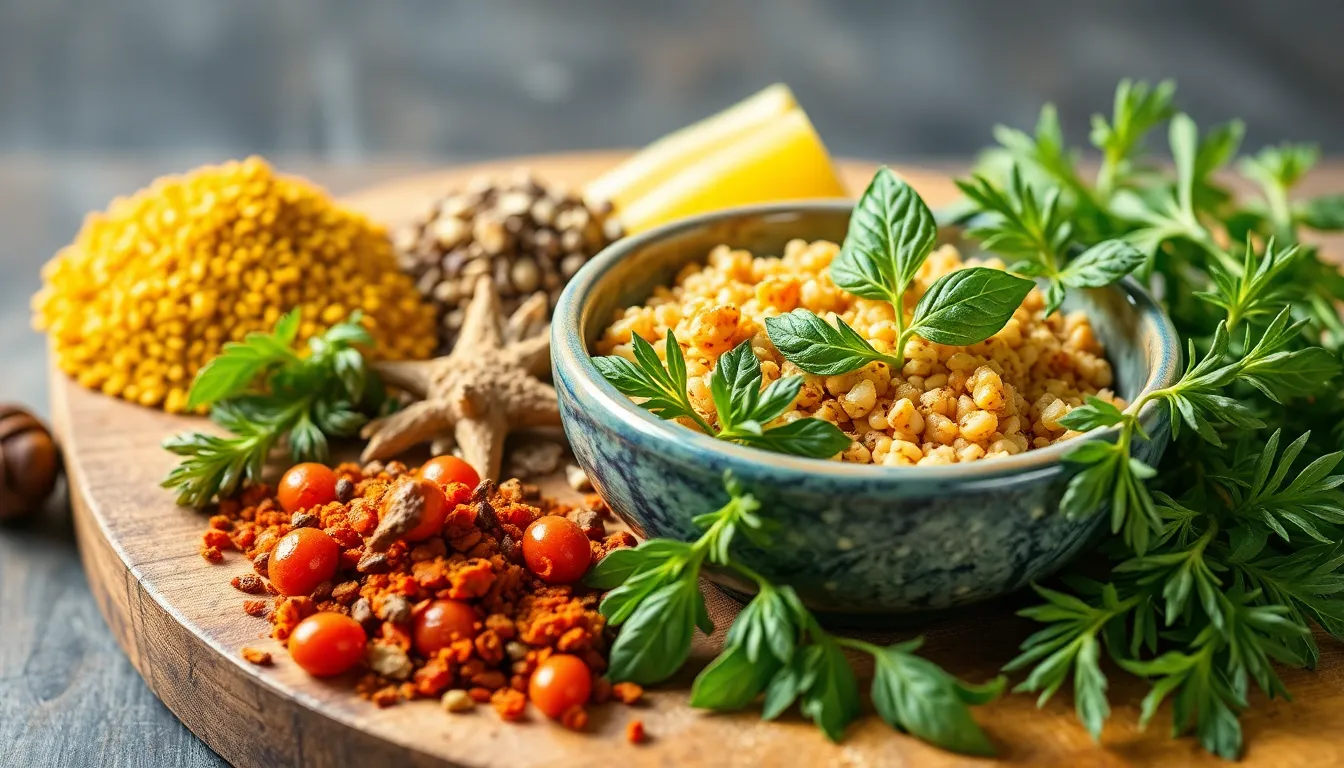Herbs and Spices of the Mediterranean: How to Enhance Your Cooking
Introduction: A Journey Through Mediterranean Flavors
The Mediterranean region is a tapestry of cultures, histories, and flavors that have influenced culinary traditions worldwide. From the sun-kissed shores of Italy to the aromatic markets of Morocco, Mediterranean cuisine is renowned for its vibrant colors, fresh ingredients, and, most importantly, its exceptional use of herbs and spices.
In the realm of Mediterranean cooking, herbs and spices serve as the soul of every dish, enhancing flavors and aromas that transport your senses. This article aims to delve into the key herbs and spices of this culinary treasure trove, providing you with insights on how to effectively use them in your cooking.
1. The Essence of Mediterranean Cooking
The Mediterranean diet is not just a way of eating; it’s a lifestyle that emphasizes fresh, whole foods, healthy fats, and a balanced approach to nutrition. Rich in fruits, vegetables, grains, fish, and olive oil, this diet is celebrated for its numerous health benefits, including reduced risk of chronic diseases and improved mental well-being.
Herbs and spices play a cultural and culinary role in the Mediterranean. They are not merely seasoning; they are a reflection of the region’s history, agriculture, and climate. From the fragrant lavender fields of Provence to the lush olive groves of Greece, the use of these flavorful botanicals tells a story of connection to the land.
2. The Stars of the Spice Rack: Key Herbs and Spices
2.1 Oregano: The Heart of Italian Dishes
Known for its robust flavor and aroma, oregano is a staple in Italian cuisine. Its peppery taste complements tomato sauces, grilled meats, and roasted vegetables.
- Common Uses: Pizza, pasta sauces, marinades, and salads.
- Tip: Use it fresh or dried, but remember that dried oregano has a more concentrated flavor.
2.2 Basil: The Freshness of Summer
With its sweet, peppery flavor, basil embodies the essence of summer. There are numerous varieties, such as sweet basil, Thai basil, and lemon basil, each offering unique characteristics.
- Varieties:
- Sweet Basil: Commonly used in Italian dishes.
- Thai Basil: With a hint of anise, perfect for Asian cuisines.
- Lemon Basil: Offers a refreshing citrus note.
- Tip: Add fresh basil at the end of cooking to retain its vibrant flavor.
2.3 Rosemary: The Aromatic Evergreen
With its piney aroma and earthy flavor, rosemary is a versatile herb that pairs well with various dishes. It’s often used in roasts, marinades, and herbal infusions.
- Health Benefits: Rich in antioxidants and has anti-inflammatory properties.
- Tip: Infuse rosemary into olive oil for a fragrant cooking oil.
2.4 Thyme: The Versatile Herb
Thyme is renowned for its subtle earthy taste and is often considered an essential herb in Mediterranean cooking. It pairs beautifully with meats, vegetables, and sauces.
- Flavor Profile: Slightly minty with earthy undertones.
- Pairing Suggestions: Works well with bay leaves, sage, and garlic.
2.5 Saffron: The Golden Spice
Saffron is the most expensive spice in the world and is celebrated for its unique flavor and vibrant color. It adds a luxurious touch to dishes like risottos and paellas.
- Culinary Significance: A little goes a long way; always steep saffron in warm water before adding it to dishes.
- Tip: Use saffron sparingly to avoid overpowering your dish.
2.6 Paprika: The Sweet and Smoky Touch
Paprika is a ground spice made from dried bell peppers and comes in various forms, including sweet, smoked, and hot. Its sweet and smoky notes add depth to countless dishes.
- Types:
- Sweet Paprika: Adds sweetness without heat.
- Smoked Paprika: Infuses dishes with a rich, smoky flavor.
- Hot Paprika: Provides a spicy kick.
- Best Practices: Add paprika early in the cooking process to release its flavors.
3. A Flavorful Fusion: Combining Herbs and Spices
Combining different herbs and spices can elevate your dishes to new heights. Here are some tips for creating balanced flavors:
- Consider the dominant flavors in your dish and choose herbs and spices that will complement them.
- Experiment with different combinations to discover unique flavor profiles.
| Herb/Spice | Complementary Pairings | Common Dishes |
|---|---|---|
| Oregano | Thyme, Garlic | Pizza, Pasta Sauces |
| Basil | Mint, Parsley | Pesto, Salads |
| Rosemary | Garlic, Lemon | Roasted Chicken, Potatoes |
| Thyme | Bay Leaves, Sage | Stews, Soups |
| Saffron | Bay Leaves, Cardamom | Risottos, Paellas |
| Paprika | Cumin, Coriander | Stews, Rubs |
4. Elevating Everyday Dishes: Practical Applications
4.1 Breakfast with a Mediterranean Twist
Start your day with a burst of Mediterranean flavors by incorporating herbs and spices into your breakfast dishes. Here are some ideas:
- Scrambled eggs with fresh basil and tomatoes.
- Greek yogurt topped with honey, walnuts, and a sprinkle of cinnamon.
- Avocado toast garnished with oregano and a drizzle of olive oil.
4.2 Vibrant Lunches: Salads and Sandwiches
Bring your lunch to life with fresh herbs and spices:
- Caprese salad with fresh mozzarella, tomatoes, basil, and a balsamic glaze.
- Pita sandwiches filled with grilled vegetables and a tzatziki sauce infused with dill.
- Quinoa salad tossed with parsley, lemon juice, and a hint of cumin.
4.3 Dinner Delights: Main Courses & Sides
Transform your dinners using Mediterranean herbs and spices:
- Marinate chicken in rosemary, garlic, and lemon juice before roasting.
- Season roasted vegetables with thyme, paprika, and olive oil.
- Prepare a seafood paella with saffron, parsley, and a medley of spices.
4.4 Sweet Endings: Desserts
Don’t forget to sprinkle a bit of magic in your desserts:
- Baklava infused with cinnamon, nutmeg, and a drizzle of honey.
- Panna cotta flavored with vanilla and topped with a berry compote with a hint of mint.
- Rice pudding infused with cardamom and garnished with pistachios.




